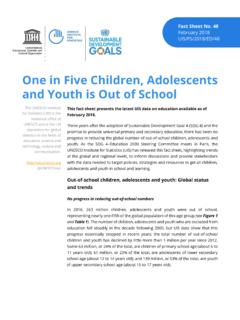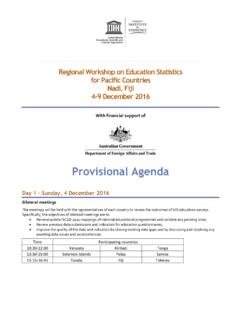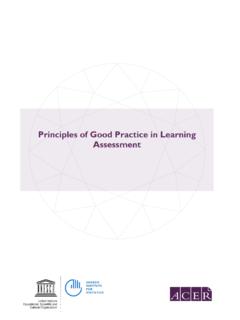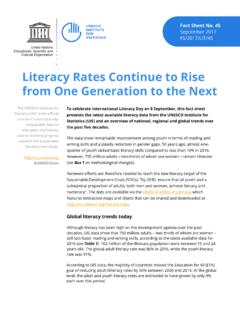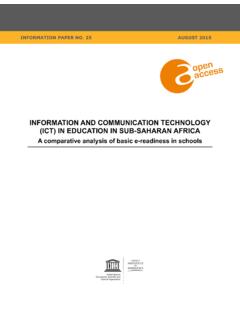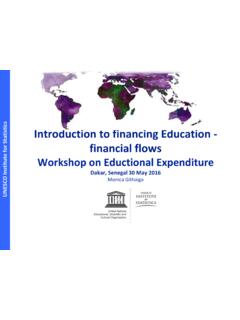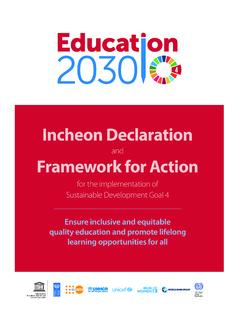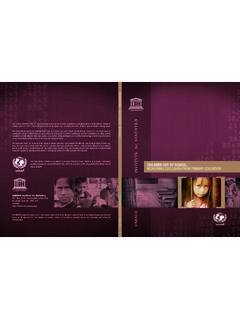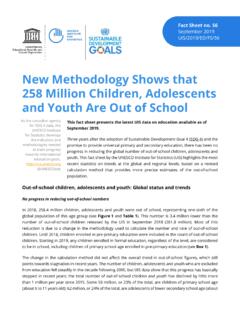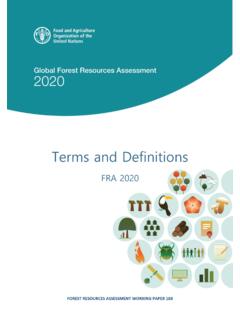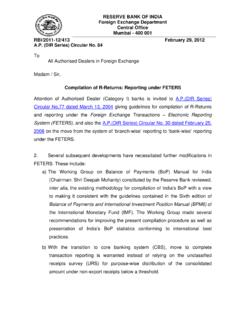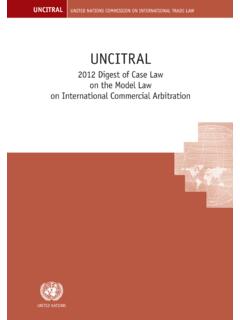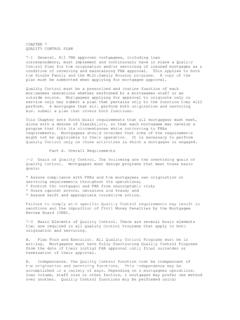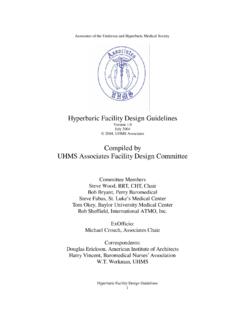Transcription of INFORMATION AND COMMUNICATION TECHNOLOGY …
1 INFORMATION PAPER NO. 22 APRIL 2014 INFORMATION AND COMMUNICATION TECHNOLOGY (ICT) IN EDUCATION IN ASIA A comparative analysis of ICT integration and e-readiness in schools across Asia - ii - UNESCO The constitution of the United Nations Educational, Scientific and Cultural Organization (UNESCO) was adopted by 20 countries at the London Conference in November 1945 and entered into effect on 4 November 1946. The Organization currently has 195 Member States and 9 Associate Members. The main objective of UNESCO is to contribute to peace and security in the world by promoting collaboration among nations through education, science, culture and COMMUNICATION in order to foster universal respect for justice, the rule of law, and the human rights and fundamental freedoms that are affirmed for the peoples of the world, without distinction of race, sex, language or religion, by the Charter of the United Nations.
2 To fulfil its mandate, UNESCO performs five principal functions: 1) prospective studies on education, science, culture and COMMUNICATION for tomorrow's world; 2) the advancement, transfer and sharing of knowledge through research, training and teaching activities; 3) standard-setting actions for the preparation and adoption of internal instruments and statutory recommendations; 4) expertise through technical co-operation to Member States for their development policies and projects; and 5) the exchange of specialized INFORMATION . UNESCO is headquartered in Paris, France. UNESCO Institute for Statistics The UNESCO Institute for Statistics (UIS) is the statistical office of UNESCO and is the UN depository for global statistics in the fields of education, science and TECHNOLOGY , culture and COMMUNICATION .
3 The UIS was established in 1999. It was created to improve UNESCO's statistical programme and to develop and deliver the timely, accurate and policy-relevant statistics needed in today s increasingly complex and rapidly changing social, political and economic environments. The UIS is based in Montreal, Canada. This report was prepared by Peter Wallet of the UNESCO Institute for Statistics, assisted by Beatriz Valdez Melgar for the production of graphs and statistical tables. Published in 2014 by: UNESCO Institute for Statistics Box 6128, Succursale Centre-Ville Montreal, Quebec H3C 3J7 Canada Tel: (1 514) 343-6880 Email: UNESCO-UIS 2014 ISBN 978-92-9189-148-1 Ref: UIS/2014/ICT/TD/3 REV DOI This publication is available in Open Access under the Attribution-ShareAlike IGO (CC-BY-SA IGO) license ( ).
4 By using the content of this publication, the users accept to be bound by the terms of use of the UNESCO Open Access Repository ( ). The designations employed and the presentation of material throughout this publication do not imply the expression of any opinion whatsoever on the part of UNESCO concerning the legal status of any country, territory, city or area or of its authorities or concerning the delimitation of its frontiers or boundaries. The ideas and opinions expressed in this publication are those of the authors; they are not necessarily those of UNESCO and do not commit the Organization. - iii - Table of contents Page Acknowledgements .. 5 Introduction .. 6 1. Why do we measure ICT in education? .. 6 2. Methodology: E-readiness as a framework for quantifying ICT in education.
5 8 3. ICT in Asia ..9 4. Integrating ICT in education through policy and other formal commitments .. 9 5. ICT in national education curricula .. 11 6. Infrastructure to support the integration of ICT in educational institutions .. 14 Electricity and telecommunication facilities .. 14 Building computer infrastructure: Learner-to-computer ratios (LCRs) .. 16 LCR in schools offering computer-assisted instruction (CAI) .. 20 Allocation of computer resources: Pedagogy versus administration .. 21 Computer-assisted instruction: The role of computer laboratories and ICT support services .. 22 Connecting schools to support Internet-assisted instruction .. 26 Older versus newer forms of ICT-assisted instruction offered in schools: The role of radio, television, computers and the Internet.
6 29 7. Participation in ICT-assisted instruction .. 32 8. Teaching and learning and ICT in education .. 34 Teacher preparedness and ICT in education .. 34 Educational outcomes and ICT in education .. 37 9. Next steps: Looking forward .. 40 References .. 41 Reader s guide .. 45 Annex. Statistical tables .. 46 - iv - List of boxes Box 1. The six Education for All (EFA) goals .. 7 Box 2. WSIS targets on education and related indicators .. 7 Box 3. Instructional hours using ICT according to national standards and curriculum .. 13 Box 4. Implementing one-to-one computing through low cost laptops and tablets: Costs versus 19 Box 5. Four types of ICT-assisted instruction .. 23 Box 6. Usage of ICT in Education in Asia: Evidence from PISA (2009) of the relationship between frequency and performance in mathematics and science.
7 38 Box 7. ICT usage by learning activity and learning achievement in mathematics and science: Evidence from Asian countries from TIMSS 2011 .. 39 List of tables Table 1. National curricula with specific objectives or a course on basic computer skills or computing by level, 2012 .. 12 Table 2. Instructional hours using ICT by level, 2012 .. 13 Table 3. Learner-to-computer ratio (LCR) in primary and secondary schools versus LCR in schools with computer-assisted instruction (CAI), 2012 .. 20 Table 4. Proportion of pupils enrolled in programmes offering ICT-assisted instruction, by gender, 2012 .. 33 List of figures Figure 1. National plans to implement ICT in education, by type, 2012 .. 11 Figure 2. Proportion of educational institutions with basic electrical and telecommunications infrastructure by level of education, 2012.
8 15 Figure 3. Learner-to-computer ratio (LCR) by level of education, 2012 .. 17 Figure 4. Computers in educational institutions allocated by purpose, by level of education, 2012 .. 22 Figure 5. Computer-assisted instruction, computer laboratories, and ICT support services by level of education, 2012 .. 24 Figure 6. Proportion of educational institutions with Internet, fixed broadband, and Internet-assisted instruction by level of education, 2012 .. 27 Figure 7. ICT-assisted instruction by type and level of education, 2012 .. 31 Figure 8. Proportions of combined primary and secondary teachers teaching basic computer skills and teaching subjects using ICT versus proportions trained, 36 Figure 9. Performance in mathematics and in science by duration of computer usage during lessons, 2009.
9 38 Figure 10. Monthly computer usage by learning activity and student achievement in mathematics and science among Grade 8 pupils, as reported by teachers, 2011 .. 39 - 5 - Acknowledgements Data presented in this report are the result of a co-sponsored data collection by the UNESCO Institute for Statistics (UIS) and the Korea Education and Research INFORMATION Service (KERIS) following a capacity-building workshop on ICT in education statistics in Seoul, Republic of Korea, from 7 to 9 September 2012. In particular, the UIS would like to thank Sungbin Lim, Byeong-Gil Sohn, Boseon Kim and Hyunjin Cha. Additionally, the UIS would like to thank Wu-Jeong Kim, Director of the e-Learning Policy Division from the Ministry of Education (Republic of Korea). Lastly, our appreciation goes to the national correspondents who completed questionnaires and helped to contextualise the ICT in education data, including: Artak Poghosyan (Armenia) Armen Kulakhszyan (Armenia) Quyen Tran (Australia) Jennifer Dawes (Australia) Ayaz Abushov (Azerbaijan) Kamrul Khan (Bangladesh) Osman Goni (Bangladesh) Ugyen Dorji (Bhutan) Tha Sok (Cambodia) Yanli Li (China) Zhenzhu Zhang (China) Jonathan Ng (China, Hong Kong) U Kwan U (China, Macao) Lat Hang Vong (China, Macao) Levani Bidzinashvili (Georgia) Shalender Sharma (India) Yul Yunazwin Nazaruddin (Indonesia) Bahamin Takhtaei (Iran, Islamic Rep.)
10 Yuko Kamoshita (Japan) Maira Meldebekova (Kazakhstan) Elnura Abeldieva (Kyrgyzstan) Somkhanh Didaravong (Lao PDR) Phoukhaoka Sacklokham (Lao PDR) Faridah Abu Hassan (Malaysia) Rosnani Mohamed Ali (Malaysia) Yaugoob Adam Manik (Maldives) Yoosuf Ahmed (Maldives) Altantuya Yura (Mongolia) Khin May Than (Myanmar) Khin Yi (Myanmar) Jaya Prassad Acharya (Nepal) David Lambie (New Zealand) Abram Abanil (Philippines) Rosemarie Agnes Esera (Samoa) Simon Sim (Singapore) Weebddearachchige Sunil Perera (Sri Lanka) Sathien Usaha (Thailand) Prapa Tantasuparak (Thailand) Valuable input was also received from UNESCO s Regional Bureaux in Bangkok and New Delhi. - 6 - Introduction More than ever, the advent of the knowledge economy and global economic competition compel governments to prioritise educational quality, lifelong learning and the provision of educational opportunities for all.
